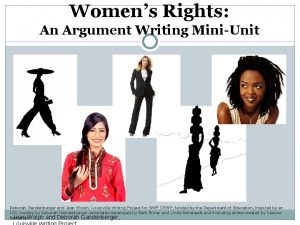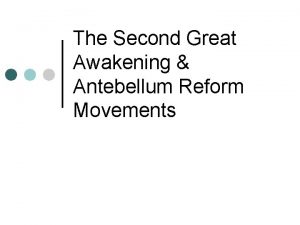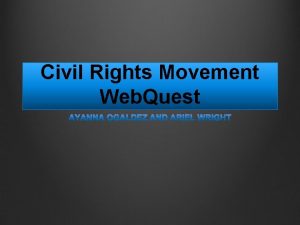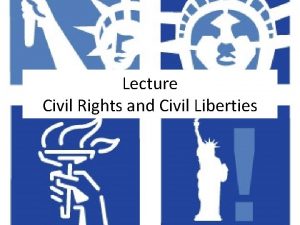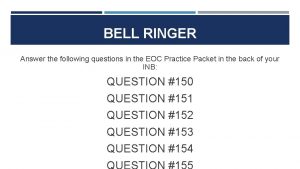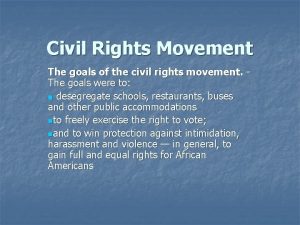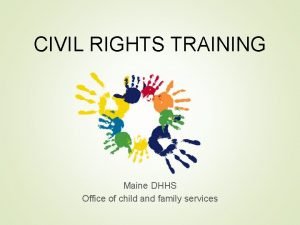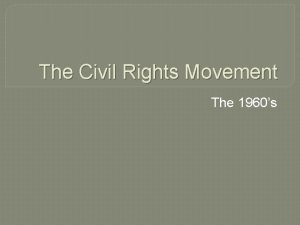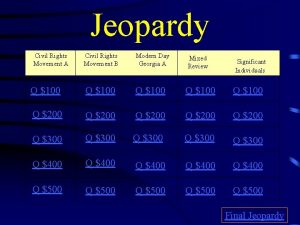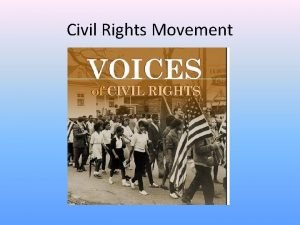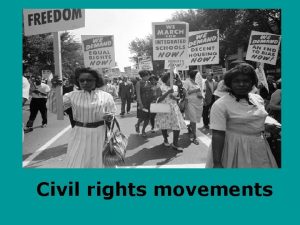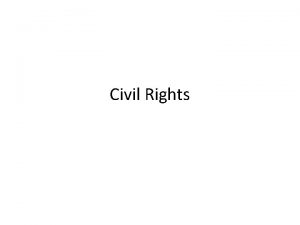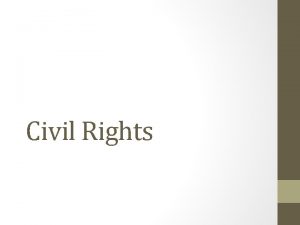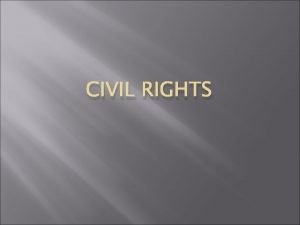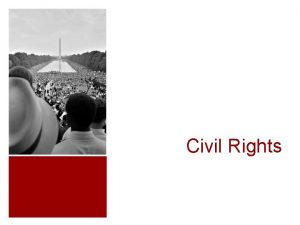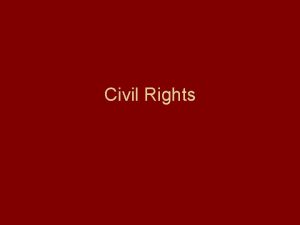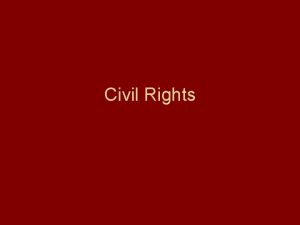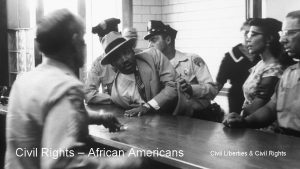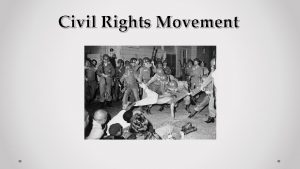Women in the Seattle Civil Rights Movements Seattles




















- Slides: 20

Women in the Seattle Civil Rights Movements

Seattle’s Female Activists Seattle’s female civil rights activists have unique stories. As people of color, they battled racial discrimination. As women, they battled sex discrimination. The intersection of these two fights sometimes pitted women of color against those who should have been allies. This slide show explores female activists’ particular experiences in Seattle’s civil rights movements. Activism takes different forms. In 1946, these women organized the PTA at Bailey Gatzert, one of Seattle’s only integrated elementary schools.

A Long History of Protest African-Americans in Seattle began protesting discriminatory employment, housing, and other practices at the turn of the century. Women were active from the very beginning in church groups, social uplift organizations, and other causes. Susie Cayton helped start the Seattle chapter of the NAACP (National Association for the Advancement of Colored People) in 1913. Susie Cayton was also Associate Editor of The Seattle Republican which served Seattle's African American community from 1894 to 1913. Her husband Horace Cayton was editor

Christian Friends for Racial Equality The Christian Friends for Racial Equality played an important role in civil rights campaigns in the 1940 s and 1950 s. Black churchwomen and white churchwomen worked together to highlight segregation practices in Seattle. Social activities were important, but the CFRE also mounted effective lobbying campaigns, helping to secure passage of a state Fair Employment law in 1949.

American Indian Women’s Service League The American Indian Women’s Service League was the one of the first civil rights organizations in the country fighting for urban Indians. It was founded in 1958 and remains active today. Pearl Warren (second from the right) served as President from 1958 to 1971. In 1960 the group opened the Indian Cultural Center which provided social and health services, taught Native cultural awareness, and laid the foundation for the political activism of young urban Indians in the late 1960 s and 1970 s

Women and men worked together click to play 2 minute video In addition to these woman-led organizations, women and men worked together to fight discrimination. In the late 1940 s, the Urban League led a campaign to force downtown stores to hire African Americans; Vivian Caver played a key role in that fight. Vivian Caver’s more than 50 year record of civic service in Seattle’s African American community includes substantial civil rights advocacy work, including working with the Urban League, and serving as Vice Chair and later Chair of the Seattle Human Rights Department.

click to play 3 minute video Women in the movement, 1960 s Men usually assumed leadership roles in campaigns and organizations, even while women did much of the actual work. Joan Singler, Bettylou Valentine, and Jean Adams were key activists in the Seattle chapter of CORE (Congress of Racial Equality). Founded in 1961, CORE organized nonviolent campaigns against employment discrimination, housing and school segregation, and police brutality.

Later Civil Rights Movements In the late 1960’s, a new generation of civil rights activists took to the streets to protest continuing discrimination in Seattle. Though women in earlier generations had proven their leadership potential, they had usually done so in organizations like CFRE that consisted mostly of women. In the late 1960 s female activists began to challenge sexism and insist on full gender equality in the various civil rights movements. The Black Panther Party was one of the new movements of the late 1960 s. Here BPP members protest the incarceration of Party leader Huey Newton.

Confronting inequality in movements that stood for equality Women began to resent the distribution of responsibilities in the civil rights movements. All too often, men claimed the leadership roles while women were expected to perform behind-the-scenes tasks such as making copies of fliers, typing, cooking and childcare. Kathy Hallie was one of the few female leaders in the Black Panther Party.

Sexism in the student movement click to play 1 minute video With earlier experience and obvious leadership skills, Sharon Maeda was upset at the treatment she received by her fellow activists. Labeling the work she and other women did as “grunt work, ” Maeda describes her experiences. Raised in Portland Seattle, Sharon Maeda attended UW in the 1960 s and became involved in civil rights activities. A teacher and journalist, she has served on the Board of Japanese American Citizens League, was a founding member of Seattle Third World Women, and is currently the president of a consulting firm. (1 min)

click to play 2 minute video An Uphill Battle Though some men in the organization were responsive to women’s protests, others were not, and women still faced chauvinism and discrimination from their fellow activists. Aaron Dixon describes the difficulty in integrating women into the Black Panther Party. Aaron Dixon helped start the Black Student Union at the University of Washington before going on to found the Seattle chapter of the Black Panther Party. He served as Captain from 1968 to 1972.

click to play 2 minute video Challenging sexism in the American Indian movement Sometimes women leaders who were supported by their local communities faced discrimination at a national level. Ramona Bennett, elected Chairwoman by her Puyallup tribe, talks about having to fight her way into the National Tribal Chairman’s Association Meeting in the 1970 s. A Puyallup, Ramona Bennett has been a pioneering activist on behalf of Indian rights since the 1950 s. In 1971, she was elected Puyallup Tribal Chairwoman, becoming one of the first women to lead a tribe. She was one of the principal authors of the Indian Child Welfare Act passed by Congress in 1978.

Filipina Cannery Workers in the 1970 s Working in the Alaska fish canneries in the 1970 s, Lynne Domingo experienced this dual discrimination first hand. Because the canneries were segregated by race and sex, women of color were essential to the movement for fair treatment of Filipinos in the industry. Here she explains the difference between white and Filipina women’s work in the cannery. click to play 2 minute video Lynn Domingo became involved in the Union of Democratic Filipinos (KDP) while still in high school. She attended the University of Washington where she played a leadership role in the Asian Student Association. She remains an active member of the Legacy of Equality, Leadership and Organizing (LELO).

Women of color had two battles to fight At the same time that people of color were struggling against employment discrimination, women of all races and ethnicities were as well; they wanted to be allowed into industries that had traditionally been reserved for men. Often times these careers paid better than ones that had been traditionally labeled “women’s” careers. Beverly Sims and her husband Tyree Scott picket with members of the United Construction Workers Association, a multi ethnic organization for workers in the construction industry.

Women in “male” industries click to play 2 minute video Beverly Sims describes the experience of being a person of color in a traditionally white industry, and being a woman in a traditionally male industry: the electrical workers trade. One of the first women members of IBEW Local 46, Beverly Sims was involved in pioneering court decisions mandating affirmative action in the construction industry.

click to play 2 minute video First Filipina American in state legislature In a very different setting, Velma Veloria also felt the difficulty of being a woman of color in a primarily white, male setting: the state legislature. Here she describes how she tried to cope during her first term in office in 1992. Velma Veloria came to Seattle in the late 1970 s to organize cannery workers under the auspices of the KDP. After a decade of labor activism, she turned to electoral politics and served in the legislature for 13 years.

click to play 1 minute video The fight is not over The struggle for equality between men and women did not end in the 1970 s, nor did civil rights movements. Even in more recent struggles women have needed to establish themselves as capable leaders who deserve respect. Rosalinda Guillen discusses women’s work in the 1990 s campaign to unionize workers at Chateau Ste. Michelle winery. Rosalinda Guillen helped lead the United Farm Workers campaign that resulted in a contract with Chateau Ste. Michelle winery in 1995. A native of Skagit County, she had worked in the fields when she was young, then built a successful career as a bank officer. She gave that up to devote herself to farm worker organizing.

Though women of color had long been essential to civil rights struggles, they still needed to fight for equal recognition among their male peers. They also battled sexism and racism outside of their organizations, at work and in other locations. Today, women continue to be a vital part of community activism all over the city.

Credits This slide show was created by Teresa Frizell Photo Credits: Harry Bridges Center for Labor Studies: Chicano Power LELO United Construction Workers Association: Tyree Scott and Beverly Sims Seattle Times: Black Panthers with posters Museum of History and Industry: 1946 PTA; American Indian Women’s Service League; Free Huey University of Washington library, Manuscripts and Archives: Christian Friends of Racial Equality pamphlet Return to main page www. civilrights. washington. edu

Seattle Civil Rights and Labor History Project www. civilrights. washington. edu
 Civil rights and civil liberties webquest
Civil rights and civil liberties webquest Which of the following is also known as axial movement
Which of the following is also known as axial movement Would you rather live in athens or sparta
Would you rather live in athens or sparta Women's rights
Women's rights Byzantine empire
Byzantine empire Women's rights movement
Women's rights movement Civil rights movement essential questions
Civil rights movement essential questions Civil rights movement webquest
Civil rights movement webquest Civil rights in child nutrition programs
Civil rights in child nutrition programs Define civil rights
Define civil rights Civil rights bell ringers
Civil rights bell ringers Goals of the civil rights movement
Goals of the civil rights movement Chapter 20 civil liberties protecting individual rights
Chapter 20 civil liberties protecting individual rights Civil rights training certificate
Civil rights training certificate Title vii of the civil rights act
Title vii of the civil rights act Civil rights cloze notes 1
Civil rights cloze notes 1 Civil rights sitins
Civil rights sitins Civil rights choice board
Civil rights choice board Chapter 14 postwar prosperity and civil rights
Chapter 14 postwar prosperity and civil rights Civil rights movement jeopardy
Civil rights movement jeopardy Civil rights movment
Civil rights movment



